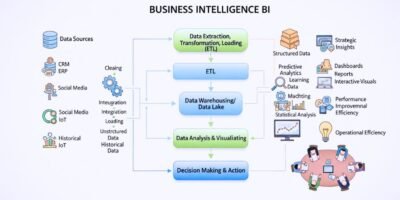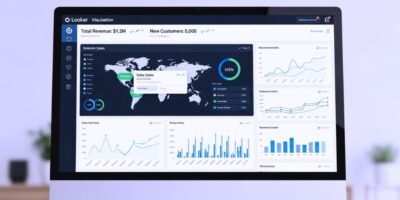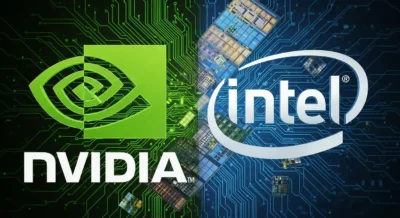In the digital age, data is the most valuable asset, and the Database Management System (DBMS) is the unsung hero that stores, secures, and retrieves it. Every application you use, from social media to online banking, is powered by a sophisticated DBMS working silently in the background. It’s the foundational layer upon which all modern software is built.
As we look at the landscape in 2025, the market is defined by a dynamic battle between traditional relational (SQL) databases, known for their structure and reliability, and flexible non-relational (NoSQL) databases, built for the scale and variety of big data. Choosing the right DBMS is one of the most critical architectural decisions a developer or business can make. Here are the top 5 players dominating the market.
PostgreSQL
Often hailed as “the world’s most advanced open-source relational database,” PostgreSQL has become the go-to choice for developers who need robustness, extensibility, and strict standards compliance. It has a well-earned reputation for reliability and data integrity.
Its feature set often rivals that of expensive commercial databases, making it a powerhouse for complex, mission-critical applications.
- Highly Extensible and Customizable: PostgreSQL allows you to define your own data types, index types, and procedural languages, making it incredibly adaptable to specific problems.
- Support for Advanced Data Types: Natively supports a wide range of data types, including JSON, XML, and geospatial data (via PostGIS), allowing it to handle tasks often reserved for NoSQL databases.
- ACID Compliance and Reliability: Offers rock-solid transactional integrity (Atomicity, Consistency, Isolation, Durability), which is essential for financial and data-sensitive applications.
- Thriving Open-Source Community: Backed by a vibrant global community that ensures a constant pace of innovation and a wealth of third-party tools and support.
Best For: Complex data-driven applications, data warehousing, geospatial applications, and any project where data integrity and standards compliance are paramount.
MySQL
As the “M” in the legendary LAMP stack (Linux, Apache, MySQL, PHP), MySQL is arguably the most popular and widely used open-source relational database in the world. It is renowned for its speed, reliability, and ease of use, especially for web applications.
Now owned by Oracle, it continues to be a dominant force, powering a massive portion of the internet, from startups to tech giants like Facebook and YouTube.
- Exceptional Performance and Speed: Highly optimized for read-heavy workloads, making it an excellent choice for content management systems (like WordPress), e-commerce sites, and web applications.
- Ease of Use and Large Talent Pool: It is famously easy to set up and manage, and its immense popularity means there is a huge community and a vast number of skilled developers available.
- Strong Replication and Clustering: Offers robust features for creating read replicas to scale out applications and ensure high availability.
- Mature and Battle-Tested: Having been around for decades, MySQL is an incredibly stable, secure, and well-understood database with a massive ecosystem of tools and libraries.
Best For: Web applications, e-commerce platforms, content management systems (CMS), and any project where speed and ease of use are top priorities.
MongoDB
MongoDB is the undisputed leader of the NoSQL movement and the most popular document-oriented database. It breaks from the rigid table-based structure of SQL databases, instead storing data in flexible, JSON-like documents.
This model allows for rapid development and the ability to handle a wide variety of unstructured and semi-structured data with ease.
- Flexible Document Data Model: Storing data in BSON (a binary version of JSON) documents allows developers to change schemas on the fly without downtime, perfectly matching agile development workflows.
- Built for Horizontal Scalability: Designed from the ground up to scale out across multiple servers (sharding), enabling it to handle massive volumes of data and high traffic loads.
- Rich Query Language and Indexing: Despite being NoSQL, it offers a powerful query language, robust secondary indexes, and an aggregation framework for complex data analysis.
- MongoDB Atlas: It’s a fully managed, global cloud database service that simplifies deployment, scaling, and management on AWS, Google Cloud, and Azure.
Best For: Big data applications, real-time analytics, mobile apps, content management, and any project with rapidly evolving requirements or unstructured data.
Microsoft SQL Server
Microsoft SQL Server is the enterprise-grade relational DBMS for the Windows ecosystem, offering deep integration with other Microsoft products and a comprehensive suite of tools for data management and business intelligence.
It is a powerhouse for corporate environments, known for its high performance, robust security features, and industry-leading BI and analytics capabilities.
- Deep Microsoft Ecosystem Integration: Offers seamless integration with Windows Server, Azure, Power BI, and the .NET framework, creating a cohesive and powerful enterprise data platform.
- Industry-Leading Performance: Consistently ranks as a top performer in TPC benchmarks for both data warehousing and transactional processing workloads.
- Comprehensive Business Intelligence (BI) Tools: Includes a full suite of BI tools like SQL Server Analysis Services (SSAS) and Reporting Services (SSRS) right out of the box.
- Advanced Security Features: Provides a rich set of security features, including data encryption, access control, and vulnerability assessment tools, which are critical for enterprise compliance.
Best For: Enterprise applications (especially on Windows), business intelligence and data warehousing, and companies heavily invested in the Microsoft technology stack.
Oracle Database
Oracle Database is the long-standing leader in the commercial relational database market, known for its extreme performance, scalability, and reliability. It is the go-to choice for large, mission-critical enterprise applications that handle massive transaction volumes.
While it comes with a premium price tag, for the world’s largest corporations in finance, telecommunications, and retail, its power and proven track record are non-negotiable.
- Unmatched Performance at Scale: Engineered for high-performance online transaction processing (OLTP) and data warehousing at an enormous scale.
- High Availability with Real Application Clusters (RAC): Its RAC technology allows multiple computers to run the database simultaneously, providing incredible fault tolerance and scalability.
- Rock-Solid Security and Compliance: Offers the most advanced and granular security features on the market, which is why it is trusted by banks and governments worldwide.
- Autonomous Database: Oracle’s cloud offering uses machine learning to automate database tuning, security, backups, and updates, significantly reducing administrative overhead.
Best For: Large-scale enterprise OLTP systems, financial institutions, data warehousing, and mission-critical applications where performance and reliability are the absolute top priorities.
Conclusion
The database landscape in 2025 is richer and more diverse than ever. Your choice of DBMS will fundamentally shape your application’s architecture and capabilities. For flexible, open-source power, PostgreSQL is an unmatched all-rounder, while MySQL remains the king of the web. When your data is unstructured and needs to scale, MongoDB leads the NoSQL pack. In the enterprise world, Microsoft SQL Server offers a complete data platform for the Windows ecosystem. At the same time, Oracle continues to be the ultimate choice for mission-critical performance at the highest level.
Understanding the strengths of these market leaders is the first step in building a robust, scalable, and secure foundation for your data-driven future.













